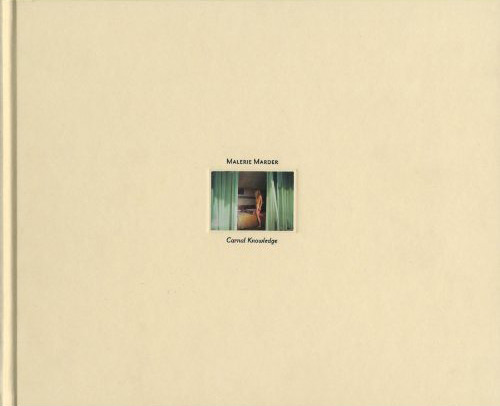Review: Carnal Knowledge by Malerie Marder

Much could be said about contemporary nude photography, provided we properly defined it first. The contemporary nude seems to be that sliver of work between soft- (or hard-) core pornography and whatever the kind of photography is called where a photographer (often, but not always a male) takes photographs of a naked person (a young woman) to explore the usual cliches of the nude. This is probably the lousiest definition of “contemporary nude photography” you might have come by in quite some time, but let it be good enough. Instead of worrying about definitions, it might simply be much more productive to talk about a specific artist. Let’s take Malerie Marder. (more)
Those unfamiliar with Marder’s work could simply get a copy of Carnal Knowledge and find out more. The book comprises work from 1996 until 2007, the earlier photographs done while Marder got her MFA at Yale (with a foreword by Gregory Crewdson and an extended email-picture conversation between Marder and Philip-Lorca diCorcia, the book is about as Yale heavy as it could get).
The very first photograph sets the tone of the book: A naked woman and a man are facing each other in an indeterminate room, and the viewer is turned into a voyeur of sorts by the fact that the encounter is seen through the room’s window (the curtain is pulled aside). I’m tempted to think there is a tenderness and promise in the woman’s gaze. The scene is unresolved, something might happen - their hair is too neat for something too have happened already.
So we are made to look, actually to observe, a person or two, often naked, often in what looks like a stage between one moment in time and another, ultimately more carnal one. At times, there is transgression or possible transgression or maybe just imagined transgression. At times, the viewer becomes involved in that she or he is turned into the focus of the naked person’s attention. The moment is often, maybe always, unresolved, and the viewer is left to hope for something to happen.
Things are made more complex by the photographer being a model herself in some of the photographs, along with her mother and father, there is a boyfriend, there is a sister, and there are all kinds of combinations (such as a boyfriend with the mother). Yet nothing is sever overly obvious, nothing is ever seedy. In the email exchange diCorcia describes the images as follows:
“very little clothing, no children or animals, a queer almost threatening light, tension between the stark and the dreamlike, a story not told […] intimacy as a verb, privacy as an adjective, light and color filtered transformed mediated, implicit emotional or physical violence, you.” (p. 153; the idiosyncratic punctuation is in the original)
Even though clearly addressing Marder in their exchange, I’m tempted to think that the “you” here in fact applies to the viewer, too. The viewer is made complicit in these photographs. The viewer becomes part of… let’s call it the game. It is a game, a clearly very adult game. What makes these photographs so good that it’s not a game the viewer is invited to play. It’s a game she or he is made to play.
Highly recommended.
Carnal Knowledge, photographs by Malerie Marder, essays/text by Gregory Crewdson, Charlotte Cotton, Malerie Marder, Philip-Lorca diCorcia, 144 pages, Violette Editions, 2011